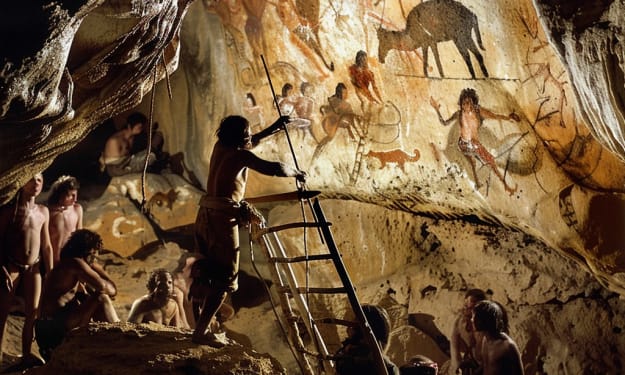
In the heart of a sprawling wetland, where the air is thick with the scent of decaying vegetation and the symphony of croaking frogs, there stood a congregation of purple pitcher plants (Sarracenia purpurea). Their slender, elegant pitchers rose proudly from the damp ground, their hues ranging from deep violet to magenta, each one a testament to the beauty that thrives in the midst of a harsh and unforgiving environment.
Among these captivating pitchers, there was one that stood out, a solitary bloom that bore a story as intricate as the veins running through its delicate petals. This particular pitcher plant, affectionately named Amethysta by the creatures of the wetland, was not just a botanical marvel; it was a symbol of resilience and an embodiment of the cycle of life that pulsed through the wetland ecosystem.
Amethysta's journey began as a tiny seed, carried by the wind from a distant parent plant. It landed in the soft, waterlogged soil of the wetland, finding a home among the mosses and ferns. Slowly but surely, Amethysta sprouted, its tender leaves unfurling to catch the warm rays of sunlight filtering through the dense canopy above.
As Amethysta grew, it faced numerous challenges. The wetland, though teeming with life, was a battleground for survival. Insects buzzed around, seeking nectar and refuge, unaware of the potential peril lurking within the vibrant pitcher plant community. But Amethysta was not just a passive observer; it was a master of deception and a skilled hunter.
The pitchers of Amethysta, like those of its kin, were ingeniously designed to lure, capture, and digest unsuspecting insects. The rim of each pitcher bore a captivating pattern, resembling the veins of a leaf or the delicate strokes of an artist's brush. Its colors, ranging from a hypnotic purple to a velvety magenta, served as an irresistible invitation to the insects fluttering about.
Amethysta's pitcher was a carefully crafted trap. Its slippery interior, combined with downward-pointing hairs, made escape nearly impossible for any insect that ventured too close. As they slid down the slick surface, the prey would meet their fate in the depths of the pitcher, where digestive enzymes awaited. For Amethysta, this was not a cruel act but rather a means of sustenance, a dance with nature's intricate web.
But within this seemingly harsh existence, Amethysta also played a vital role in the wetland's ecosystem. It provided a home for a myriad of microorganisms that thrived in the nutrient-rich soup at the bottom of its pitcher. Frogs and spiders, dragonflies and damselflies, all found refuge in the shadow of Amethysta's towering stalk.
As the seasons changed, so did the wetland's rhythm, and with it, Amethysta's story unfolded. In spring, the pitcher plant stood adorned with delicate blooms, each flower a testament to the plant's tenacity. Bees, drawn by the promise of nectar, buzzed around Amethysta's blossoms, unwittingly aiding in the pollination process.
Summer brought with it the buzzing chorus of life, a cacophony that resonated through the wetland. Amethysta's pitchers, now mature and fully formed, glistened in the dappled sunlight, their hues intensified by the abundance of nutrients derived from the captured insects. The wetland thrived, a dynamic tapestry of interconnected life forms.
But as autumn approached, a subtle change took hold of Amethysta. Its once-vibrant pitchers began to wither, their colors fading like the dying embers of a once-blazing fire. The plant was not faltering; rather, it was preparing for the inevitable cycle of renewal. As the pitchers withered away, they released seeds into the wind, tiny vessels carrying the genetic legacy of Amethysta.
With winter's chill settling over the wetland, Amethysta entered a period of dormancy, a necessary respite before the cycle began anew. The wetland, too, embraced the quietude of the season, as the ice-covered waters reflected the skeletal silhouettes of trees.
And so, the story of Amethysta, the purple pitcher plant, continued to unfold with each passing year. Its blooms, traps, and moments of dormancy were not isolated events but integral chapters in the grand narrative of the wetland ecosystem. As long as the wetland thrived, Amethysta's story would echo through the seasons, a testament to the resilience, beauty, and interconnectedness of life in this enchanting corner of the natural world.





Comments
There are no comments for this story
Be the first to respond and start the conversation.